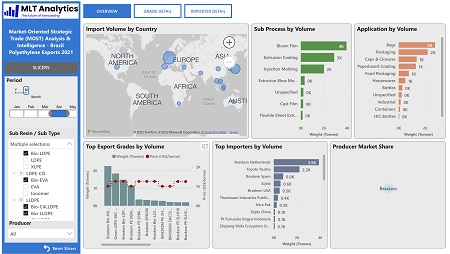Sugar cane can grow to a height of 10 feet in 12 months. Independent research by plastic market and technology expert MLT Analytics (MLTA) indicates that usage of polyethylene and polypropylene derived from renewable resources such as sugar cane, non-edible plants and biogenic fats and oils has the potential to grow equally fast.
Bio-polyethylene market leader Braskem exported almost 150,000 tonnes of bio-PE in 2021, led by bio-HDPE and bio-LDPDE grades, according to MLTA analysis. Further, with mass balance-based production picking up in Europe and Japan, the global bio-PE market will soon surpass 200,000 tonnes annually.
“Bio-based polyolefins are emerging as key enablers for plastic suppliers and brand-owners alike to reach their sustainability goals,” notes MLTA CEO Stephen Moore. Regulatory pressure is also evident. Case in point: Japan’s Green Growth Strategy Through Achieving Carbon Neutrality in 2050 targets 2 million tonnes of biomass plastics in 2030. “Leading Japanese polyolefin suppliers are already gearing up to meet these targets,” says Mr. Moore. For example, “Prime Polymer shipped its first bio-PP shipment in March this year using bio-based hydrocarbons from Neste, while parent company Mitsui Chemicals is also developing its own process technology to polymerize PP from bio-isopropanol.”

While LDPE, particularly for coating of paperboard containers, and HDPE, mainly for packaging and bags, currently dominate the marketplace, bio-LLDPE and bio-EVA are also emerging sustainable options, as is bio-PP. “A key differentiator in the market going forward will be whether these offerings are indeed 100% bio[1]based resins or marketed using a mass balance approach,” says Mr. Moore.
MLT Analytics’ latest Market-Oriented Strategic Trade Analysis & Intelligence (MOST A&I)
Polyethylene Report covering 2021 and 2022 year-to-date exports of polyethylene from Brazil is now available with a comprehensive analysis of bio-polyethylenes at the grade level included. Similar reports are available for Vietnam, India, the U.S., and Central & South America. For more information, visit http://www.mltanalytics.com.














